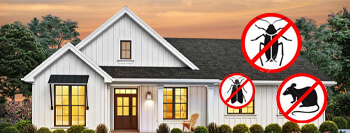Fill out the form below and a Cypress Creek representative will be in touch with you about your pest control needs.
BLOG

Which Household Pests Inflict Costly Damage To Houston Homes?
Many different types of animals are categorized as urban pests including numerous species of insects, mammals, birds, and even reptiles. Most urban pests are nothing more than a nuisance within human dwellings, but some are known to regularly inflict property damage that results in costly repairs and/or replacements. These pests are appropriately referred to as “economically significant pests,” and they include termites, rodents, wood-boring beetles, carpenter ants, fabric pests and pantry pests. Insect pests like cockroaches, silverfish, Asian lady beetles and many ant species are sometimes responsible for inflicting minor non-structural damage within homes. For example, cockroaches, psocids, whip scorpions, firebrats and silverfish eat away at cardboard, paper and bookbinding, and Asian lady beetles, among many other house pests, can stain indoor surfaces with excretory fluids, especially when they are crushed. The most economically costly insect pests of homes and buildings are termites, as they inflict several billions of dollars in structural damage annually in the United States alone.
Houston is home to several termite pest species, most notably eastern subterranean termites and invasive Formosan subterranean termites. In addition to subterranean termites, multiple drywood termite species are common in Houston as well. Although several years must pass before a termite infestation results in enough damage to cause structural collapse, termite damage can become costly after only a few months following the establishment of an infestation. Subterranean termites dwell below the ground where workers can easily infest structural wood in contact with soil, but due to their strong reliance on soil moisture, workers cannot access above-ground wood unless they build air-tight mud tubes out of a hardening mix of soil, feces, saliva and wood debris. Naturally, workers tend to infest structural wood components that are located closest to the ground, such as plates, joists, beams, girders and subflooring. These substructural lumber components of homes are difficult to replace, and therefore, very costly to replace. The mud tubes that workers build to reach these lumber components are often located on the exterior foundation walls of infested homes, and their presence indicates that an infestation has been established. Due to high termite pest activity in Houston, homes in the city should be inspected for termite infestations and resultant damage twice annually.
Has your home ever sustained damage from pests?

